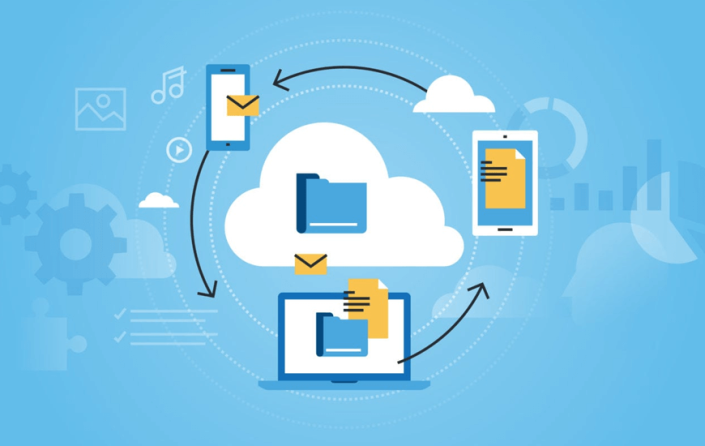
Cloud Mobile Apps are titled as one of the basic necessities for businesses nowadays especially if we think about it in regards to the upcoming years. With each passing day, more and more organizations are opting for solutions that are cloud-based or simply going for cloud-based applications.
Even though the integration rate of cloud mobile solutions is on a gradual and steady rise but still there is a significant number of businesses both online and offline that are yet to experience the power of cloud computing. That’s the reason why our team at MobileAppDaily makes sure to cover all the emerging technologies in the mobile app development industry.
There's not just one reason to make this switch of technology but in fact, there are several reasons to choose cloud-based applications i.e. easy management, distribution, and integration are few to name.
Just recently, we shared an article that emphasized the importance of cloud solutions i.e. 'Which Cloud Solution Is Best For Your Web App Development'. And now in this article, we will be focusing on some of the top reasons why you should be switching to cloud-based mobile apps for the year 2020.
And if we talk about the security risks that are presented by cloud mobile apps the ratio is much lower in comparison to other tech solutions, for example, native applications. These solutions offered by top cloud consultants not only provide benefits like agility and security, but they also act as an effective way of controlling the shadow IT.
Top Reasons To Use Cloud Mobile Apps
Below are some of the most important points that can perfectly answer your question of why you should be using cloud mobile apps for your business in 2020:
1. Seamless Database Integration
One of the most talked-about reasons to opt for cloud mobile applications and solutions is its ability to offer seamless database integration. This is a basic feature that mainly all businesses require in order to run their various processes smoothly so to accomplish that their databases should be integrated.
The process of database integration can be overwhelming and tricky to conduct for some businesses and it can result in a more confusing procedure if it is being done with a native mobile application. You should be well aware of the fact that for importing all of your database information it is essential for it to be connected with your app and that means it can result in a time-consuming process.
With the help of cloud-based mobile app development, data integration becomes easier to implement because here all the data can be synced with the cloud server. That's why cloud app developers don’t have to worry about writing complex codes to integrate databases when creating a cloud application.
2. Time Efficient
Time is a very key element that you just can not miss, especially in the case of cloud-based mobile app development. Here, questions like 'How long does it take to build an app' comes into the picture as it depends on the time factor and how to make the process efficient by saving the time.
First thing first, be realistic with your mobile application development timeline which mainly depends on the type of app that is being created. Now, if we look at the process of native app development, the result can be lengthy and tiresome for the developers.

The above image is a basic representation of the timeline that is roughly taken by a mobile application to be developed. For example, around 48 percent of mobile apps get built in a span of four to six months.
Suppose, as an app owner you wish to add some specific features in your app that can be listed as complex functionalities. Then, the overall app development process along with cloud computing services takes approximately six to ten months to complete.
There are even cloud mobile apps that may take more than a year to entirely develop and be able in app stores like Google Play Store and Apple App Store.
3. Cost-Effective
Another important factor that mainly motivates entrepreneurs to go forward with the idea of mobile cloud apps is the cost factor. By opting for cloud computing applications, you are ensuring not to pick the most expensive one in the pile like native application development.
As we have discussed in some of our previous articles, the cost of developing a mobile application depends on the features that are being integrated into it. Let's take an example, developing a native application for Android devices typically takes two or three times longer than iOS applications.

The above image shows the statistics regarding the cost of maintaining an app after the time period of one year. For example, for 28 percent the cost of app maintenance after a year is below $5000.
Similarly, we can also say that a developer who starts to develop a native mobile application for both the Apple App Store and the Google Play Store at the same time is more likely to spend more than double their costs on the application development process alone.
4. Not Specific To One Platform
In the case of cloud mobile computing, the user doesn't have to opt for any particular platform between Android or iOS i.e. the developer can launch on both platforms simultaneously i.e. the Apple App Store and Google Play Store. This is because cloud apps work on both of these operating systems.
This also reduces the additional amount of work and makes the task easier to implement while exposing your mobile app to a much wider user base. As per the latest reports, we can state that Android controls the global market share of device users.

In the image above, you can see the share of the mobile app market across the web which includes Android and iOS platforms as well.
A key point to pay attention to here is that if more people have Android devices, it doesn’t necessarily mean that this is the choice you should opt for your development strategy. Apart from this, there are plenty of reasons why you should be targeting iOS end-users as well.
This is why the developer doesn’t have to determine which types of smartphones they are targeting for their base audience before they can even start building their app as it’s irrelevant to the app development decisions.
5. No Installation Required
One of the major advantages of mobile cloud apps is that there is no need for them to be installed. In other words, cloud apps do not require to be downloaded or installed from the app stores to the user’s mobile device in order to work.
With mobile cloud solutions, users can see the interface and directly utilize it with the help of a mobile browser. But the same is not the case with native apps as they are required to be installed and downloaded onto the users' devices in order to work. In addition to this, users who download native apps will also have different versions as well as app updates based on the type of smartphone that they’re using.
6. Scalability Factor
Last but not least, there comes the factor of scalability which also ranks among the main cloud mobile app benefits and best reasons why we use cloud mobile apps. There are other factors as well as why we need a mobile app in our daily life. Many app developers think that their job is done once the app is live in the app stores i.e. the Apple App Store and Google Play Store, but that is not the case.
The iOS and Android app developers need to constantly upgrade their existing applications and make improvements as per the users' preferences and requirements from the app. Here, we won't be discussing the maintenance cost as we have already done so at the previous point. And with cloud solutions, scalability is easy to achieve.

If you are looking to expand your business that you also need to scale your app this needs to be done to make the process execution a little bit simple. The statistics above will provide you with an idea about the points related to the app business like app reviews.
Note: Your app is not required to have each and every single feature built before the launch day. You can have a plan ready regarding the implementation of new elements over the upcoming months. This will lead to the overall improvement in the user experience of the app while expanding the timeline.
7. Easy Data Recovery
Now, consider the fact that everything is being stored on a local server similar to the case of native apps, then what will happen if the server gets damaged or destroyed? A lot of things can take place and you may lose all your stored information.
It’s something that no app business owner wants to think about. A solution to this is cloud hosting your app, which means that everything is stored on multiple servers and that data is also backed up more efficiently.
8. Secure Data Storage
Now we have come to the part where we will be focusing on how secure the data is in cloud-based solutions and mobile cloud apps. For native mobile apps, the data is stored locally on the device of the app user but further leads to a number of security-related issues as the information is not secure and can be lost easily due to some malfunctions or errors in the system.
But the same security risks are eliminated if your valuable data is stored in the cloud, the chance of your information getting lost from the cloud is much less. In addition to this, cloud mobile computing solutions are not as high as a security risk.

As you can see in the above image, about 70 percent of the total population of adults in the United States claim that they are concerned about losing their money or getting their identity stolen due to the reason of their payment mode not being secure.
Final Thoughts
In the end, it can be concluded that app developers and entrepreneurs who are looking for an alternative for app development should go with mobile cloud solutions and cloud-based services. The main advantages of mobile cloud computing are the security factor and the cost efficiency that it brings to the table.
Apart from this, the app owner also has the option to launch its app for both iOS and Android platforms simultaneously without any additional effort. Whereas, in the case of the native app development the cost factor, as well as the time consumption, is comparatively higher.
So these were some of the top reasons why cloud mobile apps are a better option to opt for in the year 2020. And if you are interested in reading more such informative articles about mobile app development then make sure you join MobileAppDaily by clicking on the 'Subscribe' button.
You can also share your views on the discussed topic in the ‘Comment’ section down below.





